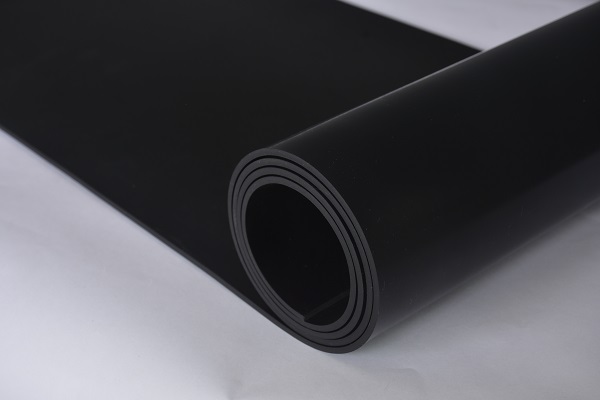
在工厂车间,配电室,机房等场景,橡胶地垫工业的承载能力直接影响设备的稳定性和作业的安全性。,没有固定的答案”多少重量可以 工业橡胶垫 熊?”从几公斤到几吨不等,取决于材料的综合效果,规格及使用环境.
一、承重能力不是一个固定值,关键在于这些 3 点
1.材质是”基础”承重的
不同橡胶材料的分子结构和机械性能差异很大,直接确定承载上限.
-天然橡胶(nr):弹性极佳,适用于配套轻型设备,平均抗压强度为 3-8 MPa.长期承重易受温度影响.
-硝酸橡胶(丁腈橡胶):杰出的耐油性,抗压强度为 8-15 兆帕,常用于化工设备的承重场景.
-氟橡胶(氟橡胶):这”国王”在极端环境中,耐高温、耐腐蚀,抗压强度超过 15 兆帕,适用于航空航天和高端制造的重载要求.
-三元乙丙单体(三元乙丙橡胶):耐候性强,保持抗压强度 5-10 室外或高温环境下MPa,适合长期承重使用.
2.规格和制造工艺决定”实际承载能力”
厚度和制造工艺是材料之外的重要因素.
厚度,数据显示,50mm厚的工业橡胶垫可承受 2-3 吨,而5毫米厚的产品在减震场景下的抗压强度通常为 3-5 MPa.硬度也发挥作用:肖氏硬度为的橡胶垫 30-50 度弹性好但承重能力弱,而那些硬度为 70-90 度承重能力强但弹性降低.
从制造工艺来看,硫化阶段至关重要——硫化不足导致胶料强度不足,而过度硫化使其变脆且容易开裂,两者都会显着降低承载能力。另外,混合过程中填料的比例以及成型过程中气泡的存在也会影响承载稳定性.
3.使用环境是”隐形变量”
即使是最好的橡胶垫也无法承受恶劣环境的磨损.
-温度:天然橡胶在80℃以上性能急剧下降,而硅橡胶可在-60°C至260°C范围内保持稳定的承载.
-中等的:接触油类,酸,和碱会加速普通橡胶垫的老化,承载能力降低30%以上,应采用丁腈橡胶、氟橡胶等特种材料.
-负载类型:突然冲击载荷(例如水锤效应)或长期连续荷载比短期静荷载更容易引起承载失效。设计时应预留安全裕度.

>将电子邮件发送到sales@jingdongrubber.com,立即获取报价
二、不同场景承重举例,阅读后直接申请
1.绝缘保护场景
5配电室常用mm厚绝缘胶垫。对于10kV级产品,工频耐受电压≥15kV且在规定时间内不击穿 3 秒。35kV及以上等级,需要更高的耐压性能。在这种情况下,承重不是首要考虑的问题,但仍需满足人员踏步和小型设备放置的基本承重要求.
2.设备减震场景
5毫米厚的橡胶垫常用于轻型设备的减震,抗压强度为 3-5 MPa.适用于机床、冲压设备等重型机械,20-50应使用毫米厚的高硬度橡胶垫,承载能力为 1-3 吨,永久压缩变形率应≤10%.
3.密封承压场景
5用于密封管道或容器的mm橡胶垫通常具有≤1.6MPa的连续承压安全阈值。如果超过该值,化工行业中容易发生泄漏,应选用氟橡胶材料,在腐蚀环境下保持稳定的密封和承载性能.
三、选择时避免误区:承载计算与试验要点
1.记住承重计算公式
实际允许承载能力需要引入安全系数,公式为:允许承载能力=(材料抗压强度×接触面积)÷安全系数。在一般工业环境中,安全系数通常设置为 1.5 2.针对建筑隔离等高风险场景,应该是 2 到 5 甚至更高,防止因短期超载或材料老化而引发事故.
2.聚焦核心测试指标
购买时,您可以索取测试报告,并特别关注三个关键数据点:抗压强度(重载场景≥15 MPa),压缩永久变形率(≤10%视为合格),和疲劳寿命(≥10⁶ 循环以获得更高的耐用性).这些数据需要通过电子万能试验机等专业设备获得,并按照GB/T等标准进行测试 7757.
工业橡胶地垫的承载能力从来不是单一数值,而是材料综合作用的结果,规格,选择合适产品的关键是首先明确自己场景的负载类型和环境条件,然后比较材料性能和规格参数,如有必要,通过专业测试验证,确保承重安全,避免陷阱.
Jingdong Rubber Co., 有限公司. 是一家专业的橡胶板生产厂家, 生产硅橡胶板, 天然橡胶板, 氟橡胶板, 氯丁橡胶板, 绝缘橡胶板,三元乙丙橡胶板, 耐油橡胶板, 防静电橡胶板, 阻燃橡胶板, 导电橡胶板, 防滑橡胶板, 和牛棚垫, ETC. 和 40 多年行业经验, 畅销国内外. 如果您需要我们的任何产品,请发送电子邮件至 sales@jingdongrubber.com.

